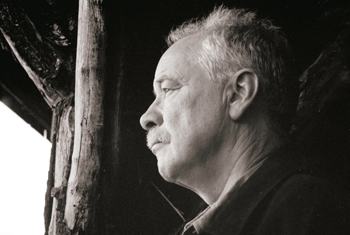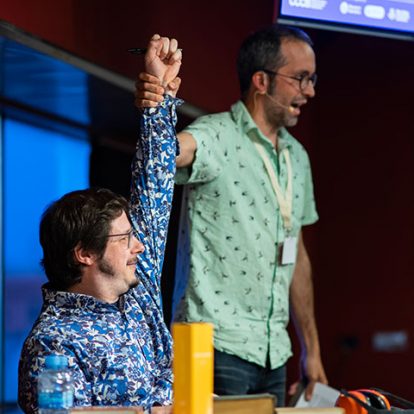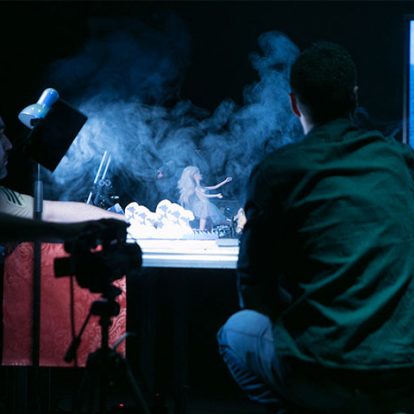A Journey through the Memory of W. G. Sebald
Eva Rexach (K Team)
26 January 2015
Kosmopolis 2015 pays tribute to W. G. Sebald with a variety of literary activities, coinciding with «Sebald Variations» exhibition that will be inaugurated on 10 March. Memory, travel and history will be the main themes of the programme.

Portrait of W. G. Sebald, by Jan Peter Tripp, 2000.
W. G. Sebald, the writer associated with memory and travel, will be the protagonist of an exhibition, Sebald Variations, where his work provides a justification for linking art with literature. The exhibition, curated by Jorge Carrión and Pablo Helguera, will be inaugurated on 10 March and can be seen until 26 July. It contains originals and reproductions of manuscripts and correspondence by Sebald and Jan Peter Tripp, pieces by 14 contemporary artists and the The Sebald Theatre, a piece by Pablo Helguera which is simultaneously a space for activity.
A week after the exhibition’s inauguration, on 18 March, Kosmopolis will open the doors of this new edition with various activities devoted to the German writer as the common thread of an inquiry into the history of the 20th century and its projections in the present.
Camille de Toledo and Cristina Rivera Garza will discuss post-memory and necropolitics and will reflect on the new forms of narrating history. Both authors, French writer Camille de Toledo with his book El haya y el abedul Ensayo sobre la tristeza europea (original French title: Le hêtre et le bouleau. Essai sur la tristesse européenne), and Mexican writer Cristina Rivera Garza with Los muertos indóciles. Necroescrituras y desapropiación, have memory as their literary core theme.
The relevance and ambition of Sebald’s work has its contemporary correspondence in the texts by Israeli David Grossman. See Under; Love and To the End of the Land are perfect examples of how conflicts between personal memory and collective history can be written in a language that is both ancient and modern at the same time. Grossman will be in discussion with Carles Torner, executive director of PEN International, the institution that defends literature and freedom of expression.
An audiovisual space and a virtual space
The audiovisual programming of Kosmopolis 15, Alpha Channel, will also devote part of its selection to Sebald. Specifically, two films will be screened. The first is Patience (After Sebald), by Grant Gee, a 2012 production that follows the steps that Sebald took through the county of Suffolk (United Kingdom) in The Rings of Saturn. The second is Austerlitz, a medium-length film from 2013 produced by Richard West, which is based on Sebald’s most famous work, and the aim of which is to find a meaning to the enigmatic photographs with which the author himself illustrated the text.
The most visible part of the tribute to Sebald within the Kosmopolis website will be the blog Sebaldiana, which will bring together texts by the exhibition curator and advisor to the festival Jorge Carrión, and by other experts on the writer’s work, such as Terry Pitts, author of the most important blog devoted to Sebald, Vertigo. Sebaldiana will be a meeting point for reflecting on Sebald, on memory and on the past, on narratives of history and travel. A sound platform for a more in-depth look at the work of this writer, considered by many as one of the fundamental authors of the last turn of the century.









